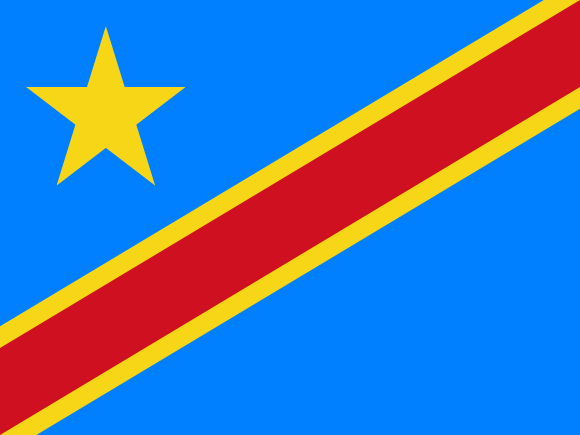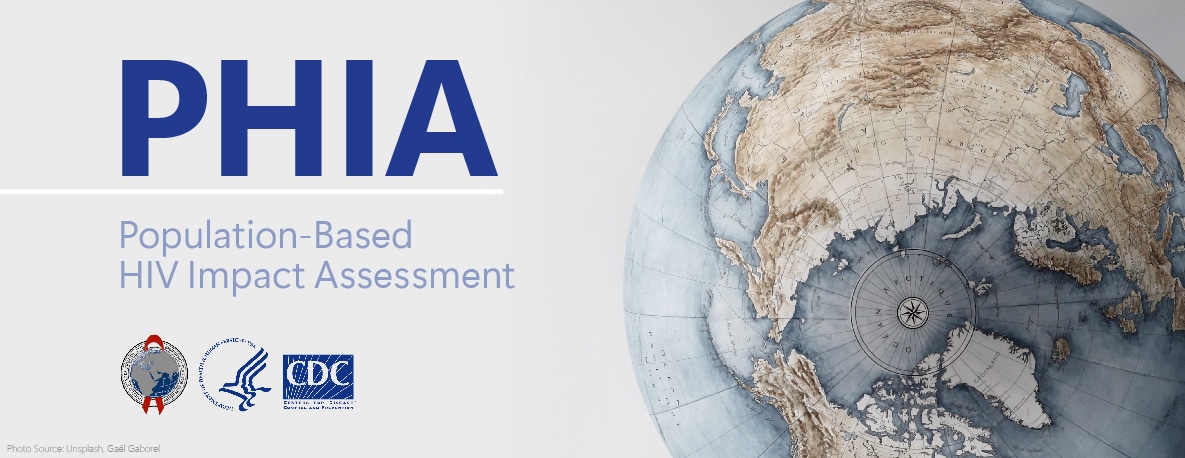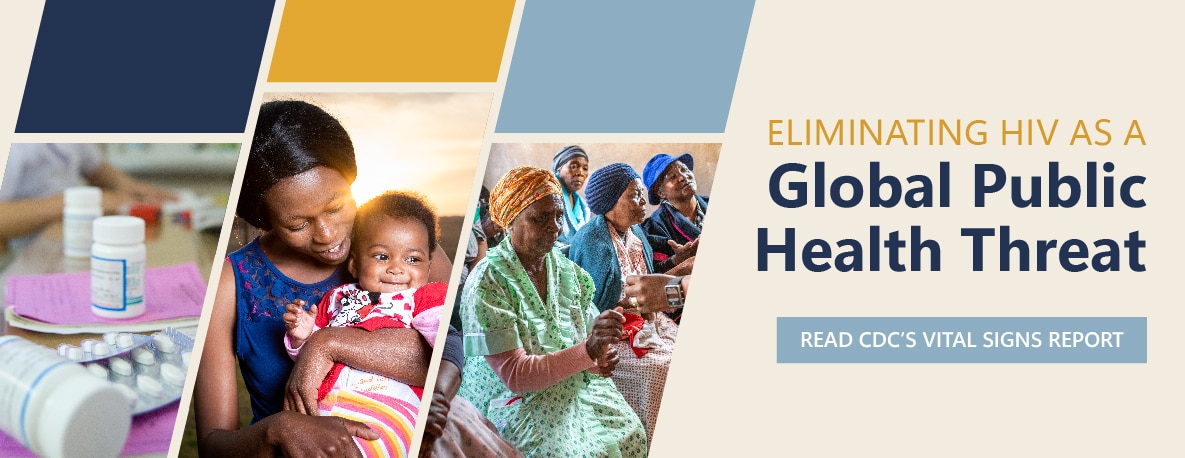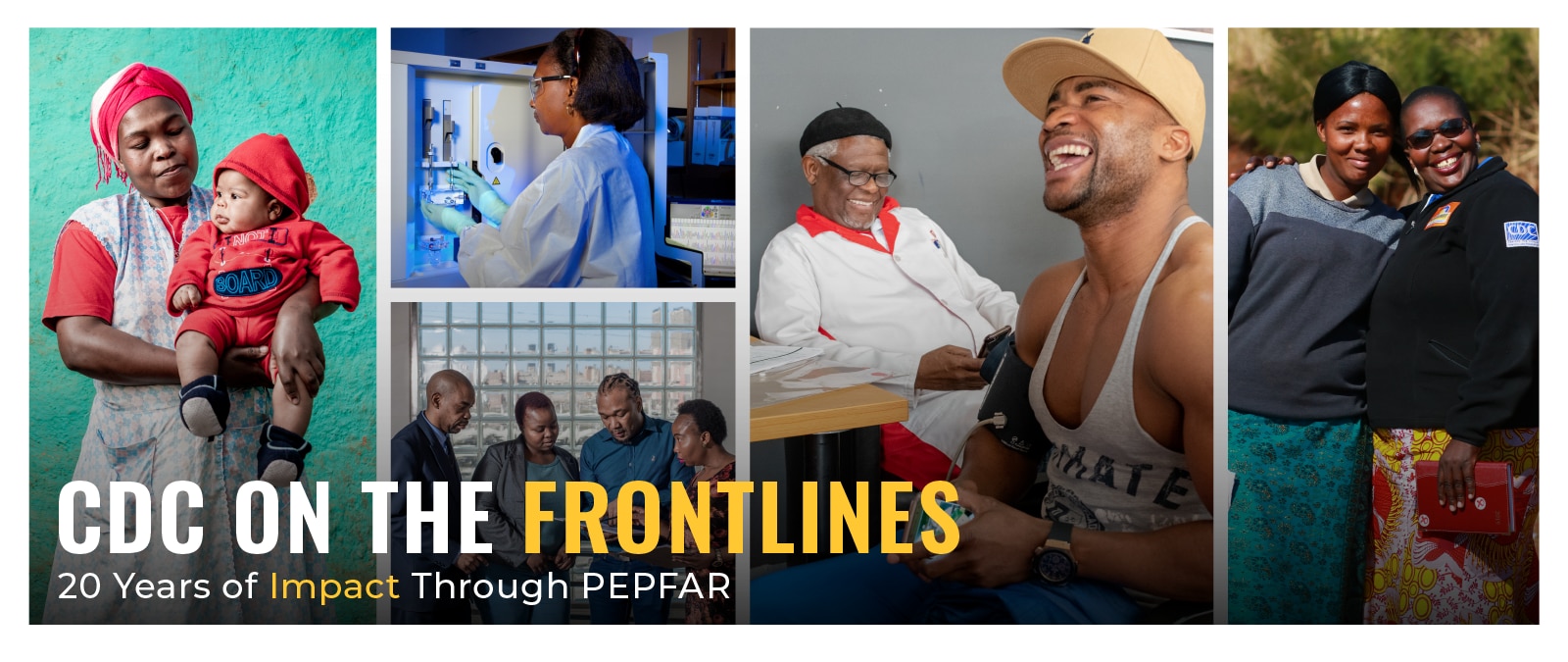Democratic Republic of Congo Country Profile

Democratic Republic of Congo Country Profile
Discover more about CDC’s work in Democratic Republic of Congo by viewing our detailed country profile
Country Overview
CDC has partnered with the Government of the Democratic Republic of Congo (DRC) since 2002. The collaboration focuses on scaling up HIV prevention and treatment services; integrating HIV and tuberculosis (TB) treatment; and strengthening public health systems, health information systems, laboratory capacity, and health workforce development. CDC provides direct support to the Ministry of Health, particularly in its comprehensive and integrated HIV services in the Haut-Katanga and Kinshasa provinces with the goal of sustained HIV and TB epidemic control. CDC’s laboratory work in DRC enhances diagnostics and quality management systems to meet the country’s need for viral load and emerging infectious disease monitoring.
Per Capita GNI
$590
(2022)
Population (million)
99.01
(2022)
Under 5 Mortality
79/1,000 Live Births
(2021)
Life Expectancy
59 Years
(2021)
Estimated HIV Prevalence
0.6%
(Ages 15-49): (2022)
Estimated AIDS Deaths
7,700
(Age≥15) (2022)
TB Treatment Success Rate
94%
(2020)
Estimated TB Incidence
318/100,000
(2021)
Estimated Orphans Due to AIDS
470,000
(2022)
TB patients with known HIV-status who are HIV-positive
8%
(2021)
Reported Number Receiving Antiretroviral Therapy (ART)
376,358
(Age≥15) (2022)
Strategic Focus
The Centers for Disease Control and Prevention (CDC) has had a long-standing partnership, since 2002, with the Democratic Republic of Congo (DRC) Ministry of Health (MOH). Since the launch of the U.S. President’s Emergency Plan for AIDS Relief (PEPFAR) in 2003, this partnership rapidly expanded and today is in alignment with 95-95-95 global objectives, strategically focusing on:
• HIV prevention and treatment: summarized in “test and start” approach
• Integration of HIV and Tuberculosis (TB) treatment
• Strengthening public health system, health information systems, laboratory capacity, and health workforce development.
• Strengthening Orphan and Vulnerable Children (OVC) activities toward epidemic control
Strengthening Public Health Systems
CDC provides technical and financial assistance for sustainable epidemic control to the MOH in the areas of service delivery and policy development. Through CDC support, MOH is empowered to provide comprehensive and integrated HIV services in the Haut-Katanga and Kinshasa provinces.
Strengthening Laboratory Systems
CDC builds capacity of laboratory functions including diagnostics and quality management systems. CDC scales up laboratory infrastructures to meet the increasing needs for viral load and emerging infectious diseases (EID) primarily in PEPFAR focus areas and secondarily in other surrounding provinces. Moreover, CDC implemented an in-country development program for laboratory accreditation. During Fiscal Year (FY) 2018, five additional laboratories (including TB national molecular lab) will enroll in the laboratory accreditation program, bringing the total number of 11 laboratories engaged in the accreditation process.
Strengthening Surveillance and Health Information Systems
CDC supports the innovative use of HIV electronic reporting system (MESI) and provides support to increase capacity in the health management information systems.
Key Activities and Accomplishments
ART Services: CDC has helped strengthen the scope and quality of antiretroviral treatment (ART) services for adults and children. As of FY 2017, CDC has (32,119) PLHIV on treatment (PEPFAR Annual Progress Report, 2017). CDC also significantly contributes to the adoption of the “test and start” approach and new national HIV management guidelines.
Prevention of Mother-to-Child Transmission (PMTCT): CDC experts contributed to eMTCT plan, option B+ pilot and scale-up phases, all resulting in increased availability of option B+ Services in DRC. In FY 2017, CDC had (1,555) pregnant women on ART (PEPFAR Annual Progress Report, 2017).
Orphan and Vulnerable Children (OVC): CDC aims to keep children safe, healthy, stable and schooled. Through CDC support, in FY 2017 8,092 OVC received services to improve their well-being.
TB/HIV Integration: CDC helps in the development of Tuberculosis infection control national plan, promotes Isoniazid Preventive Therapy (IPT) and supports TB case identification (including through Xpert). Under CDC support 970 TB/HIV patients co-infected received ART (PEPFAR Annual Progress Report, 2017).
Viral load (VL): CDC increased capacity and access for EID and VL testing. In FY 2017, PEPFAR supported laboratories processed 19,807 samples (61.83% coverage) for VL.
Key populations: FY 2017, resulted in over 14,000 Female Sex Workers (FSW) and Men who have Sex with Men (MSM) tested for HIV, resulting in 568 positives. Of these positive, 511 were initiated on ART. The remaining HIV negative clients were supported to stay negative.

Tracking PEPFAR Impact Toward Global Targets
The U.S. Centers for Disease Control and Prevention (CDC) works with partners including host countries, local implementing partners, faith-based organizations, and other community-based organizations to measure progress towards HIV epidemic control in countries supported by the U.S. President’s Emergency Plan for AIDS Relief (PEPFAR).

Vital Signs: Global HIV Communications Toolkit
In 2003, the U.S. President’s Emergency Plan for AIDS Relief, or PEPFAR, was announced. When it was launched, PEPFAR became the largest commitment by any nation to address a single disease in history. At the time, HIV was a global crisis, devastating families, communities, and economies worldwide—particularly in sub-Saharan African countries.

CDC On the Frontlines
Over the past 20 years, the U.S. President’s Emergency Plan for AIDS Relief (PEPFAR) has saved millions of lives as a leader in the global response to two of the world’s deadliest infectious diseases – HIV and TB. As a key implementing agency of the U.S. President’s Emergency Plan for AIDS Relief (PEPFAR), CDC is at the forefront of these global efforts to treat and prevent these diseases.